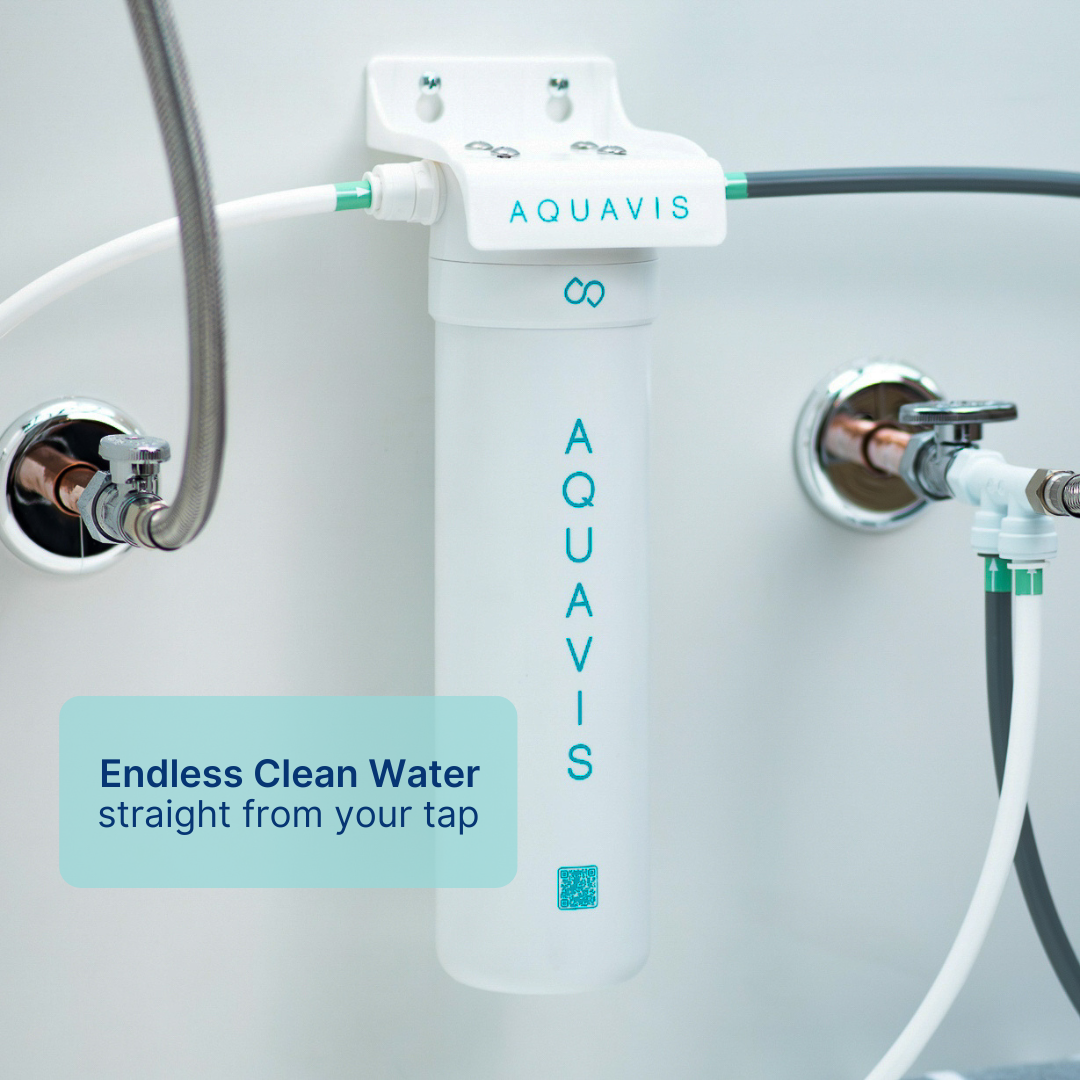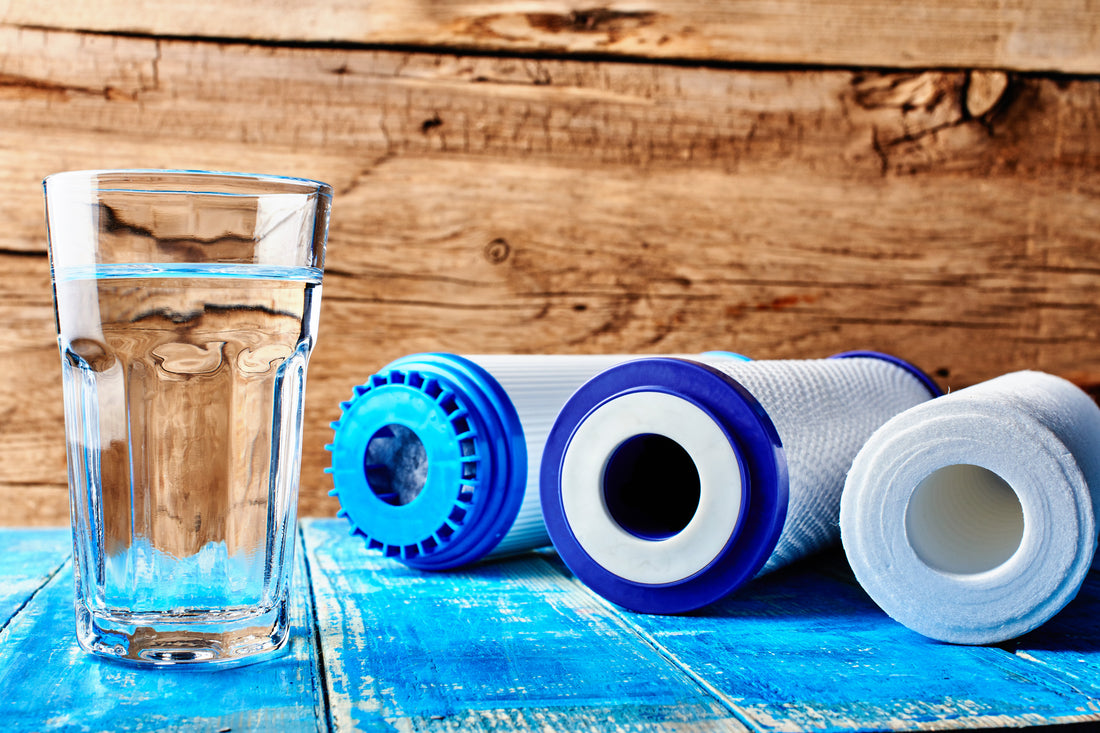What does water taste like?
You might say that water doesn't have a taste, but allow us to refresh your memory. Picture this: It's a particularly hot summer day, and you've just finished an intense game of tag with your friends. Parched, you suddenly spot the garden hose and dash over for a gulp of the ice-cold water. Almost like magic, the water leaves you refreshed and ready for more play.
Maybe it's just the nostalgia, but let's be honest—no water has ever tasted as good as that garden-hose elixir.
The fact is, water has a taste—and many of us began to notice it as kids. Tap water from Grandma's house tasted different from water from home, and water from pitcher filters tasted different from bottled water.
But what causes the pleasant or unpleasant taste in water? And why does some water have a taste while other water doesn’t?
That's where water filtration systems come in.
What Is a Water Filtration System?
Water filtration systems are the unsung heroes of clean water.
These filters comprise a variety of complex systems and purification methods to remove impurities from unfiltered water sources, providing you with water for drinking and washing. Water filtration systems can affect the taste of water, but more importantly they can rid our water supply of rust particles, harmful bacteria, and other organic contaminants.
Just like not all water tastes the same, however, not all water filtration systems are created equal. Depending on the level of filtration, some water filters may cause drinking water to have a metallic taste, or worse, fail to filter harmful organisms and contaminant molecules.
The Importance of Water Filters
When you think of water filtration systems, you likely think of municipal water. After all, most citizens rely on the level of water purity in their municipal water supply. But the shocking reality is that several of the municipal sources we rely on for clean drinking water contain a variety of contaminants that have negative impacts on our health.
The Hard Facts
As of February 2024, an astonishing 5,021 sites in the United States and its territories were found to contain a detectable level of "forever chemicals" called per- and polyfluoroalkyl substances (PFAS). These chemicals, commonly used to make coatings and products that resist heat, oil, and grease, have been identified to affect cholesterol, enzyme levels, immune system responses, and infant birth weight.
Similarly, a 2022 study showed that 36% of tested U.S. drinking-water aquifers contained volatile organic compounds (VOCs). Commonly used in products such as paint, varnish, and cosmetics, these harmful contaminants are linked to a higher risk of cancer, immune and nervous system damage, as well as kidney and liver damage.
Unfortunately, household water sources are not the only issue. Even store-bought bottled water has recently been found to contain on average about 240,000 microplastics and nanoplastics per liter.
What We Can Do
In light of these statistics, it's clear that the water filter systems we have relied on for decades aren't providing safe drinking water for our communities and families. Thankfully, you don't have to continue relying solely on these faulty types of water filtration. You can take your family's health into your own hands with in-home water filters like sink filters, inline filters, under-sink filters, and more.
But how do you find the best filter? Don't worry—we're here to give you the information you need about the common types of filters and how to choose the best one for your family.
The Five Common Filter Types
There are several ways to filter water, but this article will cover the five most common types to help you determine which suits your family’s needs best.
Mechanical
Mechanical filtration is the most basic type of filtration we will discuss in this article. A mechanical filter uses a mesh filter or cartridge filter to remove larger particles visible to the naked eye.
Because this type of water filter only removes larger particles from water, it always should be paired with a more meticulous filtration method. This secondary filtration can remove the smaller contaminants from water as well as purify the water from harmful pathogens or chemicals.
Common examples: bead filters, sand filters, canister filters, bag filters
Pros: simple, cost-effective, efficiently removes solid waste
Cons: low level of filtration, does not purify water, must be paired with secondary filter
Our verdict: Similar to a food strainer, this type of filter is effective for removing large particles and contaminants from water. If you intend to use this filter for your home, however, it must be paired with a more meticulous filter that can remove unseen particles and impurities from the water. We would recommend using a filter that can remove both large and small contaminants while purifying your water.
Reverse Osmosis (RO)
A reverse osmosis filter pre-filters water to remove larger particles before forcing it through a semipermeable membrane using a high-pressure pump. Once this process is complete, the contaminated water is dispelled through a different part of the system as the purified water continues on to then supply your home.
Common brands: Aquasana, Whirlpool®, Waterdrop®, iSpring, GE, APEC
Pros: removes up to 99% of contaminants like lead, salts, arsenic, and bacteria
Cons: slower flow, requires a drain line for contaminated water, requires maintenance of multiple filters, takes up more under-sink space, can filter out helpful minerals, expensive
The verdict: This filter is highly effective when filtering many dangerous contaminants, making it a great option for those who need heavier water treatment for health reasons. However, the multi-filter system is bulkier and requires multiple filter changes, making installation and maintenance less convenient. If this isn't up your alley, we recommend finding a more compact filter that features high filtration in a more simple system.
Ultraviolet Light (UV)
UV light water purifiers treat impure water by causing damage to the DNA of living organisms in the water (e.g. bacteria and pathogens). This damage prevents the organisms from reproducing and causing illness when ingested.
Common brands: Aquavis, Hydroviv, Aquasana, VIQUA, iSpring
Pros: effectively purifies water from bacteria, viruses, pathogens, and other harmful organisms
Cons: does not filter the water from lead, PFAS, and larger contaminants; must be used in a multi-filter system
The verdict: UV purifiers effectively remove dangerous organisms from your water, but don't offer any filtration properties. Without filtration, these purifiers must be used with a water filter that removes larger harmful contaminants. If purity is your top priority, pairing a UV purifier with a filter might be the option for you. If you prefer the ease and convenience of a highly effective filter that takes care of sediment and smaller contaminants, a different option might suit your needs better.
At Aquavis, purity is a priority. That's why our Luma water bottle features a UV light purifier to keep mold and bacteria from growing, helping you stay healthy and hydrated.
Ion Exchange
This filter uses electronically charged ions to remove contaminant ions such as nitrate, sulfate, arsenic, and fluoride and exchange them for different ions (hence the name). Because ion exchange also removes many of the minerals from water, it is more often used to soften water rather than filter it.
Common brands: Pure Aqua, Brita®, Waterdrop®
Pros: softens water, removes some harmful contaminants, provides ultra-pure water
Cons: removes healthy minerals from water, does not filter for microorganisms
The verdict: This filter can help soften and clean water, but it shouldn't be used as the main filter because it lacks the capability to remove harmful contaminants such as bacteria, viruses, lead, and more. Additionally, because ion exchange filtered water removes many helpful minerals, it can leach essential minerals from your body when ingested. Considering its water-softening properties, this filter might be a good option for bathing water, but we would not recommend it for drinking water.
Activated Carbon
Activated carbon filters remove impurities from water through adsorption. As water passes the carbon surface, the harmful particles are attracted to the activated carbon much like metal to a magnet. More sophisticated carbon systems can remove not only chlorine, sediment, and some organic compounds, but also PFAS, lead, and cysts.
Common brands: Aquavis, Brita®, APEC, Express Water
Pros: removes sediment, chlorine, and other contaminants; improves taste; compact, single-filter system, fast flow, cost-effective
Cons: basic filter does not remove PFAS, lead, or cysts
The verdict: This filter combines simplicity and compactness, making it a great option for those installing the filter themselves. It also filters harmful contaminants while improving the taste and smell of water. The activated carbon filter that powers the Aquavis Pulse under-sink system is NSF certified for material safety and IAPMO validated to remove PFAS. The filter is likewise proven to remove lead, cysts, VOCs, chlorine, and chloramine, leaving your water clean and healthy.
Which Filter Is Right for You?
Having a water filter in your home can help you keep your family healthy and hydrated. In-home water filtration removes dangerous sediment and other contaminants from your family's drinking water. But how do you choose the right filter?
A high-quality water filter keeps the good and removes the bad with precision and speed, while offering convenient sizing, installation, and maintenance. Many filters on the market provide some of these features, but your family deserves a filter that covers it all—so we created one.
How Aquavis Can Help
At Aquavis, we understand how overwhelming it can be to protect your family's health and safety. That's why our team has used their decades of water-filtration experience to create a small, simple, and incredibly effective filter that supplies your family with great-tasting, contaminant-free water.
Improving upon the existing activated carbon technology, our specialized activated carbon filter removes the most concerning contaminants from your water—including "forever chemicals" (PFAS), lead, VOCs, chlorine, chloramine, and cysts. The size and simplicity of this filter also allows for easy, under-sink installation; no need to call in a professional or find room for a bulky, complex system.
With the Aquavis Pulse, you get:
- Clean, healthy water
- Advanced filtration
- Easy installation
- Immediate use
- Simple maintenance
- Electricity-free supply
- Compact sizing
Check out our website today and start your family's journey to better health and hydration.
Frequently Asked Questions about Water Filters
How Do Water Filters Work?
At their most basic level, water filters use a variety of systems to remove contaminants from impure water and supply us with clean, potable water. This process differs depending on the type of filter in question.
What Does a Water Filter Remove?
Water filters can remove anything from visible particles like sand and fecal matter to microscopic contaminants like bacteria, PFAS, and microplastics.
How Do I Install a Water Filter?
Many water filters on the market require professional installation by a plumber, however water filters like the Aquavis Pulse can be easily installed under your sink without professional assistance.
How Often Do I Need to Replace Water Filters?
Maintenance schedules will depend on the type of filter you have, but most water filters should be replaced every three to six months.
What Makes Aquavis Different?
Our compact activated carbon filter was developed by a team of professionals with decades of experience. Unlike many other filters, it provides meticulous filtration of contaminants like lead, PFAS, and other toxins while offering easy, under-sink installation and maintenance.



